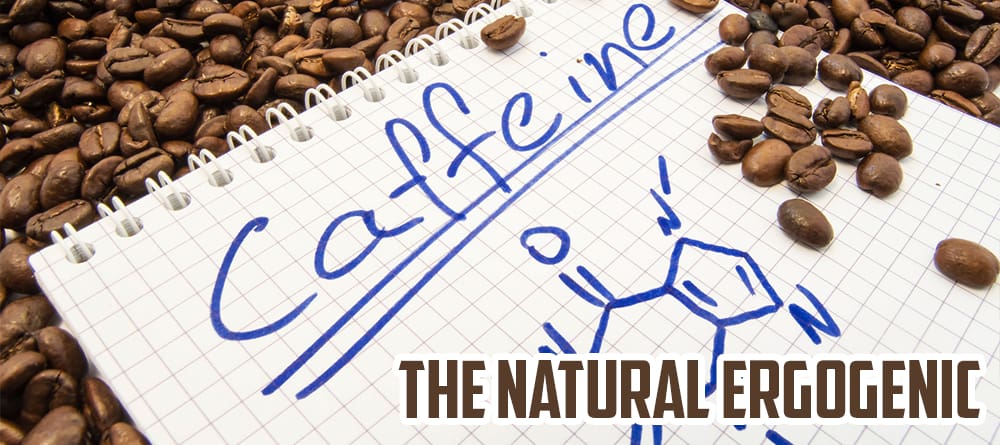Caffeine is one of the most widely consumed natural ergogenic aids that has been used since the Stone Age (Escohotado 1999). Its muscular enhancement effects were first documented over 100 years ago in 1907 (Rivers & Webber 1907).
Caffeine is completely absorbed within the stomach and small intestine 45 minutes after consumption, with a half life of 3 to 4 hours (Astorino & Roberson 2010), which is why it is recommended not to take caffeine 4-5 hours before sleep since it stimulates the central nervous system (Nehlig et al. 1992).
The important mode of action for caffeine that has been identified physiologically, and its cause of CNS stimulation, is that it is structurally similar to adenosine and thus can bind to cell membrane adenosine receptors, blocking their action (Ribeiro & Sebastião 2010).
When you are awake, adenosine inhibits activity of the basal forebrain. This activates signals telling your body it is time to rest, the response necessary to engage in full and sustained sleep (Huang et al. 2011). By blocking adenosine from being absorbed by receptors, caffeine’s biological mechanism results in increased energy level, alertness, and improved mood, attention, and overall cognition. (Fredholm et al. 1999; Svenningsson et al. 1999)
After training, muscle needs to replenish lost creatine phosphate and glycogen reserves and restore their buffers. These processes all require energy. A means of calculating energy expenditure is measuring elevated post-exercise oxygen consumption (EPOC) (LaForgia et al. 2006). Caffeine is very well known for elevating EPOC, proof of increased energy (Astorino et al. 2011).
Caffeine’s energy attribution has shown to increase the speed of endurance athletes, helping them run 5 kilometres faster, improving endurance (O’Rourke et al. 2008). The endurance enhancement effect of caffeine documented in other research as well (Ganio et al. 2009; Cox et al. 2002; Kovacs et al. 1998; Van Nieuwenhoven et al. 2000).
In one study showing a 15% energy increase in individuals partaking in intense resistance training, a decrease in post-exercise respiratory exchange ratio (RER) was noted (Astorino et al. 2011). This decrease in RER shows caffeine results in glycogen sparing, and there are many other studies in which caffeine has been shown to be beneficial when glycogen does not appear to be limited (Ivy et al. 1979).
This means less energy was created from carbohydrates and more from fat (Schmidt-Nielsen 1997), making caffeine a fat burner, a trait surpassing the likes of green tea EGCG (Belza et al. 2007) and comparable to p-synephrine (Gutiérrez-Hellín & Del Coso 2018).
Another study using resistance trained test subjects showed that caffeine can reduce the discomfort associated with grip fatigue, attenuating the individual's perception of pain (Bellar et al. 2011).
In regard perception, caffeine makes exercise more enjoyable by increasing arousal during exercise and improving perceived capacity time to exertion (Backhouse et al. 2011).
Going back to resistance-trained participants, caffeine increased power and strength (Jacobson et al. 1992). Caffeine’s effect on significantly increasing strength and power is evident across numerous studies (Ali et al. 2016; Bagchi et al. 2013; Tallis et al. 2013).
While the likes of coffee is a natural source of caffeine, it does not have the same sports enhancement as caffeine anhydrous, with increased free fatty acid (FFA) and adrenaline circulation only being observed in the caffeine group only (Graham et al. 1998).
The benefits of caffeine have no limits on gender nor age, meaning there are no non-responders (Amendola et al. 1998). While some people get side effects such as vasodilation and anxiety from caffeine, this can be countered by incorporating theanine.

